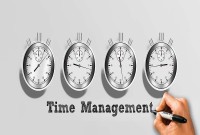- Home
- Business Processes
- Industry Knowledge
- Aerospace Industry
- Automotive Industry
- Banking Domain
- BFSI Industry
- Consumer/ FMCG Industry
- Chemicals Industry
- Engineering & Construction
- Energy Industry
- Education Domain
- Finance Domain
- Hospitality Domain
- Healthcare Industry
- Insurance Domain
- Retail Industry
- Travel and Tourism Domain
- Telecom Industry
- Leadership Skills
- eLearning
- Home
- Leadership
- Communication Skills
- Kolb Learning Cycle & Change
Kolb Learning Cycle & Change
David Kolb produced this popular model for learning in 1984. The model suggests four stages of learning which most learners go through in order to learn effectively. Leaming is itself a process of change. Something is added to our perception and prepared us for the next impression, which will change our understanding yet more, however minutely. The Kolb contribution is a significant one because it practically equates change and learning.
Kolb’s Model of Experiential Learning
David Kolb's from Western Reserve University in Cleveland, Ohio gave the model of "experiential learning" which states that humans learn continually, and, in the process, build particular strengths. He says that learning is all about having experiences and then reflects upon the experience that we have just had. We draw out some concepts and some principles from this reflection and test out the new concepts in new situations so that they become part of the ongoing experience. He described it in terms of four learning styles: Accommodating, Converging, Diverging, and Assimilating.
Kolb’s Living Experience
Kold is also a supporter of the theme of human becoming and what they become. He uses the word 'learning', and all these ideas come together and form a framework within which we can think about change and even learn to love it and welcome it. Laming is itself a process of change. Something is added to our perception and prepared us for the next impression, which will change our understanding yet more, however minutely.
What David Kolb is talking about is the normal scientific approach, where observations made are the normal scientific approach, where observations are made and reflected upon to yield theories from which hypotheses are derived and tested out in action, creating new events and experiences.
The first stage is concrete learning or concrete experience, where the learner encounters a new experience or reinterprets an existing experience. This could be where the learner is exposed to a new task or a new way of carrying out a project. This is followed by reflective observation, where the learner reflects on the experience on a personal basis. Following reflective observation is abstract conceptualization, where learners form new ideas or modify current abstract ideas, based on the reflections that arise from the reflective observation stage. The last stage is where the learner applies the new ideas to her surroundings to see if there are any modifications in the next appearance of the experience. By actively experimenting learns to associate what we have experienced with new ideas and innovations.
Change is learning
When you learn, you change. When you change, you learn. The Kolb contribution is a significant one because it practically equates change and learning. A book on change is therefore also a book about learning. Reginald Revans (1907–2003), a UK scientist and educational innovator who gave the “Action Laming framework” made a distinction with two little symbols L>C and C>L. If learning is represented by L and change represented by C then the first symbol means you are ahead in the game you are learning faster than things change. The second can spell disaster because things are changing faster than you are learning so that you are behind in the race. His contribution to our understanding of change management processes gives a central place to learning, both personal and institutional. Revans’ approach emphasizes the practical and moral significance of personal involvement in action and learning, as a means of resolving the intractable social and organizational problems that we find around us.
Revans is in harmony with Kolb in that his contribution of Action Learning is based on the concept that people learn more from reflection, discussion, and working together on real-life issues than from being lectured at. They learn from each other and the learning is relevant, and even when the classroom is being used for input, it is important to provide plenty of scope for learning in this way.
For a change initiative to succeed, project managers must effectively support those affected by the change during the project. Those grappling with the effects of change might need the training to tackle it effectively and we can use this framework to train people with different learning styles; to plan change communications; and to deal with team members who lack motivation; and more.
These perceptions of what is to be human can help us to take a positive approach to change and make it work to our advantage and to that of our enterprise. You are only really alive when you are changing. It is the essence of personal growth, it is the basis of relationships with other people, and without it, there is no learning and no progress.
Related Links
You May Also Like
-
Communication has as its central objective the transmission of meaning. The process of communication is successful only when the receiver understands an idea as the sender intended it. How does a message or an idea travel from one person to another? To transmit our message, we engage in a sensitive and complex process of communication, with different elements like sender, message, channels, receiver, noise, and feedback.
-
Creating Highly Effective Teams
How do we create effective teams? What comes to mind when you think about an effective team? High performing teams exhibit accountability, purpose, cohesiveness, and collaboration. It is a team that works seamlessly as a whole. Everyone brings unique talents and strengths and support each other to bring out the best in everyone. How do you create one?
-
Team Foundation in Forming Stage
This is the first stage of team development. This is the stage when the foundation of the team is laid. During the Forming stage, team members have a high dependence on their leader for guidance. Learn the practical strategies you can use during this stage to help your team develop into a highly effective performing team.
-
Listening is the foundation for good communication. It is also the hardest skill to master. Do you listen to confirm what you already know, or do you listen to explore and learn new things? How can we create receptive communication as a listener? The real art of listening involves awareness and sensitivity to the feelings of the speaker because it is at the feeling level that genuine connection, relationship, and healing occurs.
-
Generating Ideas using Brainstorming
The brainstorming technique was developed by Alex F. Osborn in 1957 and brainstorming means where a team of members generates a large amount of alternative fruitful ideas on a specific problem without any criticism and then evaluates each idea in terms of their pros and cons. Brainstorming techniques fall into four broad categories: visioning, exploring, modifying, and experimenting.
-
Recognizing Stress & its Sources
As an individual, you almost certainly know what stress feels like. Stressors are events or situations to which people must adjust. Stressors may be physical or psychological in nature. The level of severity of stress is determined not merely by exposure but the intensity, duration, and frequency of stressors. The sources of stress are many. They arise from multiple areas both with the individual and from the environment.
-
Charles Darwin had once commented that “It is not the strongest or the most intelligent who will survive but those who can best manage change.” Agility means the capability of rapidly and efficiently adapting to changes and recently, agility has been applied in the context of software development, agile enterprise, and agile leadership. Agile leaders play an important, even essential, role in scaling agility in an organization. Understand how being an agile leader helps in effectively catalyzing organizational change.
-
Teams are part of the modern organizational culture. Whether you are a team leader or a team member, having a better understanding of how teams work, and being able to identify where the team is in the process, is a critical part of ensuring the team is ultimately successful. Start with the basics and understand what a team is and what role they play in an organization.
-
Time management is the process of planning and exercising conscious control of time spent on specific activities, especially to increase effectiveness, efficiency, and productivity. The best time management techniques improve the ways you work. Time management refers to managing time effectively so that the right time is allocated to the right activity. Learn more about the five steps for effective time management viz. study, identify, analyze, decide, and implement.
-
Benefits of Teams in Workplace
The use of formal work teams is commonplace in modern organizations. But why we have teams? What are the benefits or advantages that teams provide for organizations and employees? Do we really need to adopt formal team structures and use team-building approaches in organizations? Read this article to explore and learn the benefits of having formal teams in organizations.
Explore Our Free Training Articles or
Sign Up to Start With Our eLearning Courses

About Us
Learning
© 2023 TechnoFunc, All Rights Reserved










